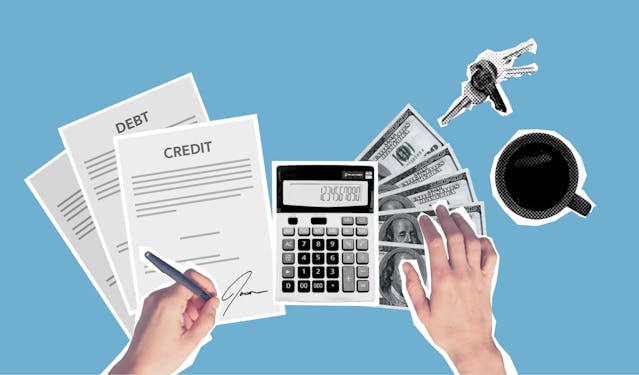In the realm of financial planning, zero-based budgeting stands out as a method that can offer individuals a precise way to handle their finances. The concept may sound technical, but it’s quite straightforward once you understand the basics. In this article, we’ll demystify zero-based budgeting, provide a step-by-step guide on creating one, and explain why it can be a game-changer in your financial life.
Understanding Zero-Based Budgeting
Zero-based budgeting is a financial strategy where every dollar of your income is allocated a specific job until you have zero dollars left to assign. Unlike traditional budgeting, which often relies on past spending patterns to forecast future spending, zero-based budgeting starts from scratch each period, usually each month, with a clean slate.
The Philosophy Behind Zero-Based Budgeting
The philosophy of zero-based budgeting is rooted in maximizing the efficiency and effectiveness of your income. By giving every dollar a purpose, you minimize wasteful spending and ensure that your financial goals are prioritized. This budgeting method encourages proactive management of your money, rather than reactive adjustments to spending after the fact.
Key Differences from Traditional Budgeting
Traditional budgeting often allows for a certain amount of financial “slack” by not necessarily accounting for every dollar. In contrast, zero-based budgeting is more disciplined and requires meticulous planning. This approach can be more time-consuming but often leads to a deeper understanding of your financial habits and potential areas for improvement.
The Benefits of Zero-Based Budgeting
Zero-based budgeting can offer numerous advantages, such as:
- Increased Awareness: By accounting for every dollar, you become more aware of where your money is going and can identify unnecessary expenses.
- Goal-Oriented Spending: It aligns your spending with your financial goals, ensuring that you’re always working towards something important to you.
- Flexibility: Although it’s structured, zero-based budgeting can adapt to changes in your income or expenses since you’re creating a new budget each period.
- Debt Reduction: It can be particularly effective for paying down debt since it encourages you to allocate money towards debt payments before discretionary spending.
- Savings Acceleration: Zero-based budgeting can also help accelerate savings by making it a priority in your spending plan.
How To Make a Zero-Based Budget
Creating a zero-based budget can seem daunting at first, but by following these steps, you can develop a budget that works for you.
Step 1: Calculate Your Monthly Income
Start by determining your monthly take-home pay. This is your income after taxes and any other deductions. If you have irregular income, average your last three to six months of income to get a baseline or budget based on the lowest-earning recent month to be conservative.
Step 2: List Your Monthly Expenses
Write down all of your monthly expenses, including fixed expenses (like rent or mortgage payments), variable expenses (like groceries or gas), and irregular expenses (like annual subscriptions or car maintenance) that need to be saved for monthly.
Step 3: Assign Every Dollar a Job
Using a zero-based budgeting template or spreadsheet, allocate every dollar of your income to an expense category until you reach zero. Remember to include categories for savings, investments, and debt repayment as well.
Step 4: Monitor and Adjust as Necessary
Throughout the month, track your spending and compare it to your budget. If you overspend in one category, adjust another category to compensate so that your total spending still equals your income.
Step 5: Review and Refine Your Budget Each Month
At the end of the month, review your budget. Look for any areas where you consistently overspend or underspend and adjust your allocations accordingly for the next month.
Zero-Based Budgeting Template and Tools
A zero-based budgeting template can simplify the process of creating your budget. You can find templates online or create your own using spreadsheet software. There are also budgeting apps and tools that offer zero-based budgeting features which can automate some of the tracking and adjusting for you.
What to Include in Your Template
Your zero-based budgeting template should include:
- Income Sources: List all sources of income, including your main job, side hustles, and any passive income.
- Expense Categories: Break down your expenses into detailed categories for better tracking and accountability.
- Allocations: Next to each expense category, have a column for the allocated amount from your income.
- Actual Spending: Include a column to track actual spending throughout the month.
- Adjustments: Have a section for adjustments to ensure you’re always balancing back to zero.
Recommended Tools for Zero-Based Budgeting
Several budgeting tools can help you with zero-based budgeting:
- You Need A Budget (YNAB): This app is designed around the zero-based budgeting method and offers robust features to help you plan and track your spending.
- EveryDollar: Created by financial expert Dave Ramsey, this app provides a straightforward zero-based budgeting platform.
- Spreadsheets: For those who prefer a more hands-on approach, Google Sheets or Microsoft Excel can be used to create a custom zero-based budgeting template.
Read more tips on how to how to create a sound budget here.
Common Challenges and Solutions
Implementing zero-based budgeting isn’t without its challenges. Here are some common issues and how to address them:
- Time-Consuming: Initially, zero-based budgeting can be time-consuming. However, as you become more familiar with the process, it gets quicker. Set aside a specific time each week for budgeting to stay consistent.
- Unexpected Expenses: Always have a miscellaneous category for unexpected expenses, and if necessary, adjust other categories to cover these costs.
- Irregular Income: If your income varies, base your budget on your lowest expected income and treat any additional income as a bonus to be allocated to savings or debt repayment.
Making the Most of Your Zero-Based Budget
To truly benefit from zero-based budgeting, it’s important to stay committed and be prepared to continually refine your budget as your financial situation evolves. Remember, the goal is not just to track spending but to ensure that your money is being used in the best way possible to meet your financial objectives.
Takeaways
Zero-based budgeting is a powerful tool for taking control of your finances. By giving every dollar a job and ensuring that your income and expenses balance out to zero, you can achieve a level of financial clarity and discipline that traditional budgeting methods may not provide. With the right approach and tools, you can transform your financial planning and work towards a more secure financial future.





























